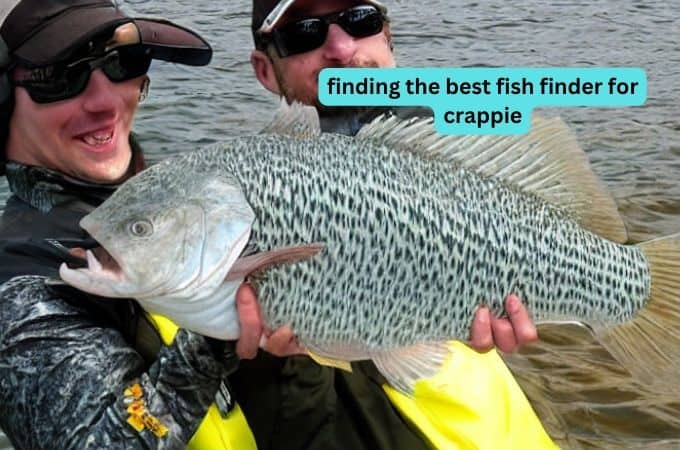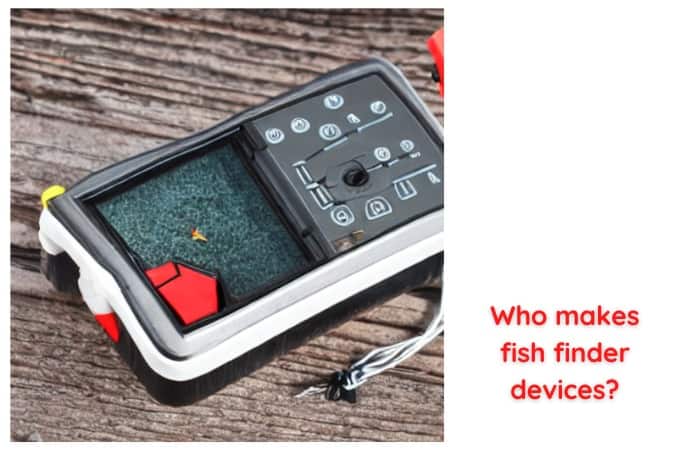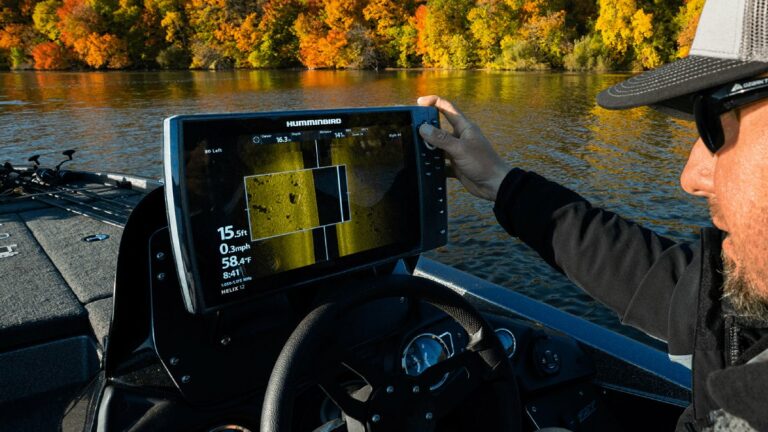6 Secrets of finding the best fish finder for crappie
Today we discuss best fish finder for crappie. Are you a crappie angler looking for the best way to locate and target your favorite species? You’re in luck! With the right fish finder, you can take your fishing to a whole new level. However, not all fish finders are created equal — shopping for one can be daunting with so many models on the market.
Worry no more – we’ve gathered 6 secrets that are sure to help you choose the absolute perfect device for tracking down those tasty crappies. Read on for our top picks and advice about how to spot quality features in any model of fish finder!
benefits of a fish finder when crappie fishing:
With a fish finder, you can:
- Locate schools of crappie
- Determine the depth of the water you fish in
- Find a structure that attracts them
- Identify areas where they are feeding
- Pinpoint thermoclines and temperature breaks 6. Detect oxygen levels associated with holding crappie 7. Discover underwater brush piles or another cover 8. Spot pH levels ideal for this species 9 . Uncover any changes made to their environment 10. Track down those shy but plentiful catches!
How to use a fish finder to locate crappie underwater:
the best way to use a fish finder to locate crappie underwater depends on the specific make and model of fish finder that you are using. However, in general, you will want to set your fish finder to either SideScan or DownScan mode, and then slowly move the device back and forth across the water until you see a response from the unit (indicated by either a change in color on the screen or an increase in beeping sound). Once you have located a school of crappie, try moving closer to them until you can start casting your line into their midst.
6 Secrets of finding the best fish finder for crappie:
- Do your research
- Determine your budget
- Consider the size of the unit
- Choose a color display
- Select a transducer
- Decide On The Frequency
1. Do your research :
Crappie fishing enthusiasts know that having the right fish finder is key. Being informed and knowing what features to look out for can help you make an educated purchase decision, so do your homework! Utilize online reviews as well as advice from friends or professionals with similar interests before splashing the cash on a fish finder – ensuring it’ll be perfect for all of your angling needs.
2. Determine your budget :
With many fish finders on the market, starting to shop can be daunting. However, if you take stock of what features you need and set a budget accordingly – ranging from around $100 up to $1k or more – your shopping experience will become much easier.
3. Consider the size of the unit :
When choosing a fish finder, size matters! From small and portable models to larger options that offer more features, there are plenty of choices for anglers. If your main priority is portability when bringing it on fishing trips or want to save space in the garage – you’ll love the convenience of finding just what fits with smaller units. But don’t skimp out if carrying capacity isn’t an issue- opt for those extra bells and whistles from bigger items! Choose wisely; happy hunting!
4. Choose a color display :
When it comes to finding fish, a color display is an invaluable tool. It allows anglers to get more precise readings and fine-tune their search for the catch of the day – especially in dim light conditions where an LCD backlit screen can make all the difference!
5. Select a transducer :
When shopping for a fish finder, the transducer is invariably an important factor to consider. In this arena two types are commonly seen: piezoelectric and ceramic. Piezo models generally come at a higher cost but boast improved performance and longer lifespans; their less expensive counterparts in turn tend to be more fragile with limited durability over time.
6. Decide on the frequency :
Looking for the perfect fish finder? You’ll need to choose between low and high frequencies – 50 kHz, 200kHz, 400kHz, or 800kHz. Low-frequency units penetrate deeper into the water but offer lower-resolution imaging; whereas higher frequencies provide greater clarity of images closer to the surface. For fishing in shallow waters opt for a lower frequency unit Whereas if you’re heading out deep sea gets yourself something with extra power!
3 best fish finder for crappie:
- Lowrance HOOK2 Fish Finder
- Garmin Fishfinder with Chirp Traditional Transducer
- ReelSonar Wireless Bluetooth Smart Fish Finder
Lowrance HOOK2 Fish Finder:
The Lowrance Hook2 4x Fish Finder is designed for people who want to have more fun fishing and less time spent setting up their equipment. The interface is easy to use with phone-like menus, auto-tuning sonar, and wider sonar coverage than traditional fish finders – so you won’t miss out on any action!
No products found.The included transducer offers 2D arch views underwater and can be mounted straight onto the boat or trolling motor, inside hulls, or scupper holes – just pick one that works for you! Get ready today with the advanced Lowrance Hook2 4x Fish Finder now.
Garmin Fishfinder with Chirp Traditional Transducer:
Garmin’s Striker 4 Fishfinder is the perfect tool for fishermen of all levels, with a 3.5″ display available and easy-to-use buttons that make navigating simple. You’ll get near-photographic images of objects in the water. with the courtesy of Chirp traditional transducer, which can detect up to 1,600 ft fresh or 750 ft saltwater depths!
No products found.Map out waypoints like brush piles, stumps & docks easily on its screen. while being confidently protected by an IPX7 rating against splashing water – only requiring 0.23 Amperes at 12 volts of power consumption!
ReelSonar Wireless Bluetooth Smart Fish Finder:
For all aspiring anglers, the ReelSonar Wireless Bluetooth Smart Fish Finder will help you catch more than ever before! Dive into depths of up to 135 feet and discover a wide range of hidden underwater creatures with its superior sonar system.
No products found.With 10+ hours of battery life, IOS/Android apps integration, and real-time strike alert when fish bite – iBobber makes fishing trips quicker, easier & smarter for guaranteed success every time. Don’t let bad weather ruin your plans; no matter what it is like outside use this innovative technology to leave luck out of the equation.
7 Tips for getting the most out of your fish finder when crappie fishing:
1. Get to Know the Fish Finder:
- Acquaint yourself with the ins and outs of your fish finder
- Become a pro at deciphering its readings to identify optimal crappie fishing spots
- Explore all types of information you can get from this device.
- Make informed decisions on what depths are best for catching these tasty treats!
2. Use the Chart View:
Get the scoop on your fishing spot! With a fish finder’s chart view, you can uncover:
- The hidden depths of your lake or river
- Best places to drop bait for optimal results
- Optimal casts according to water and landscape contours
3. Utilize Sonar Technology:
Many fish finders come equipped with advanced sonar technology which can be used to get a better idea of the contour of the lake or river bottom. This can help you decide the best spots to look for crappie.
4. Adjust Sensitivity Settings:
Make sure to adjust your fish finder’s sensitivity settings so that it is picking up on all the possible readings from below. If you are having trouble getting a good read, try adjusting the sensitivity.
5. Look for Structures:
Crappies often congregate near structures like rock piles, fallen trees, and weed beds. Use your fish finder to scan for these structures in order to find the best spots to cast your line.
6. Mark Hot Spots:
Once you have found a good spot to fish, use your fish finder’s waypoint feature to mark it on your chart. This will allow you to easily return to the spot when you want to fish again in the future.
7. Pack Patience:
Most importantly, bring patience with you when crappie fishing. Crappies can be notoriously difficult to catch and it may take some time before you get a bite. Be patient and keep trying until you find success!

final words:
So, if you’re in the market for a new fish finder and want to up your crappie game, keep these factors in mind. With a little research, you can find the best machine for both your budget and fishing needs. In no time, you’ll be pulling in big stringers of slabs right alongside the pros.



